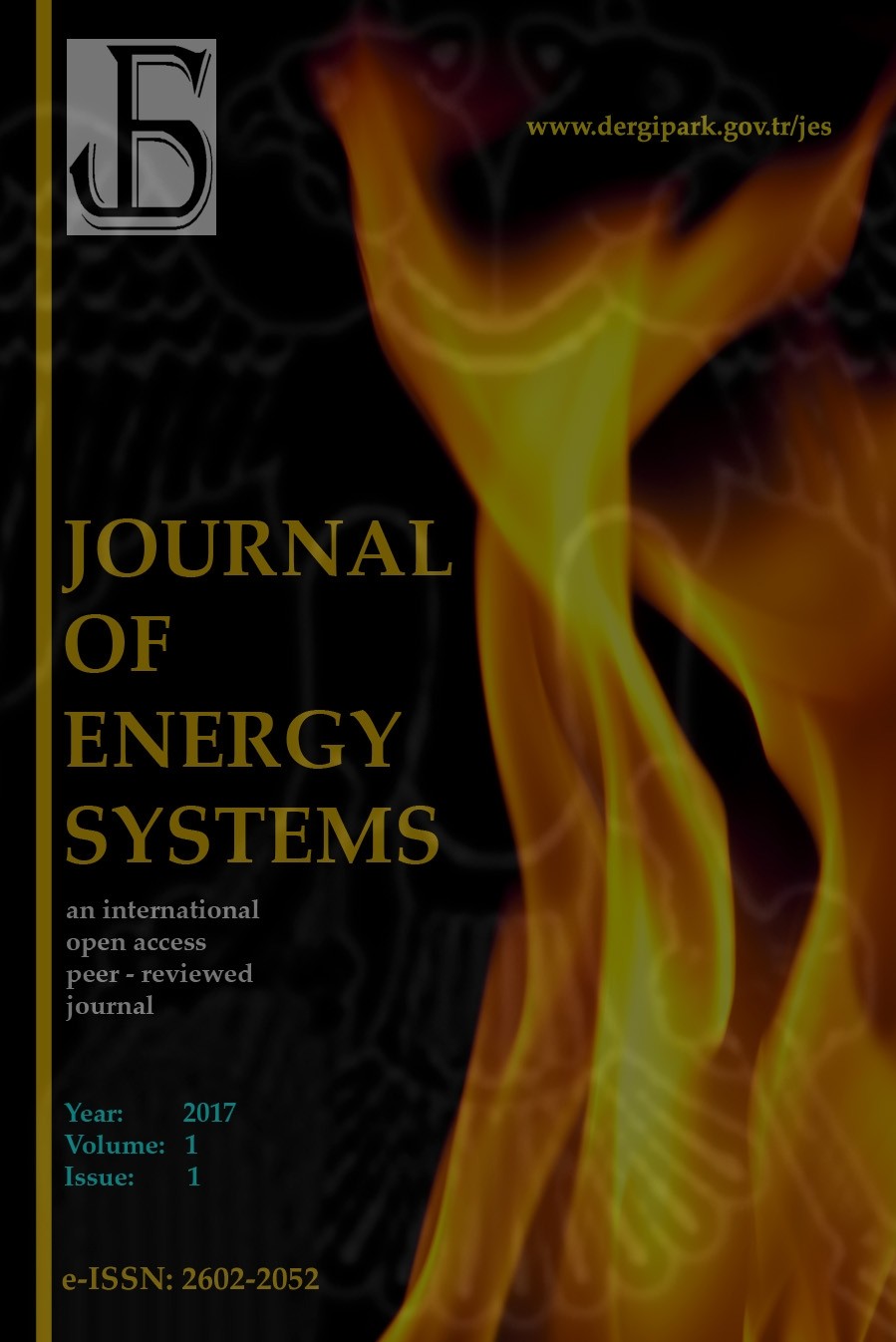Analysis and design of an air to air heat exchanger used in energy recovery systems
Analysis and design of an air to air heat exchanger used in energy recovery systems
___
- [1] Fouih, YE, Stabat, P, Rivière, P, Hoanga, P, Archambault, V. Adequacy of air-to-air heat recovery ventilation system applied in low energy buildings. Energy and Building 2012; 54: 29-39.
- [2] Kotcioglu, I, Caliskan, S, Zırzakıran, M. Heat Transfer in A Cross-Flow Heat Recovery Ventilator with Fin. Erciyes Üniv. Fen Bilimleri Enstitüsü Dergisi 2009; 25(1-2): 272 – 286
- [3] Borjigin, S, Zhang, S, Ma, T, Zeng, M, Wang, Q. Performance enhancement of cabinet cooling system by utilizing cross-flow plate heat exchanger. Energy Conversion and Management 2020; 213: 112854.
- [4] De Antonellis, S, Cignatta, L, Facchini, C, Liberati, P. Effect of heat exchanger plates geometry on performance of an indirect evaporative cooling system. Applied Thermal Engineering 2020: 115200.
- [5] Xing, Y, Weigand, B. Experimental investigation of impingement heat transfer on a flat and dimpled plate with different crossflow schemes. International Journal of Heat and Mass Transfer 2010; 53: 3874-3886.
- [6] Piper, M, Zibarta, A, Djakow, E, Springer, R, Homberg, W, Keniga, EY. Heat transfer enhancement in pillow-plate heat exchangers with dimpled surfaces: A numerical study. Applied Thermal Engineering 2019; 153: 142-146.
- [7] Kumar, P, Kumar, A, Chamoli S, Kumar, M. Experimental investigation of heat transfer enhancement and fluid flow characteristics in a protruded surface heat exchanger tube. Experimental Thermal and Fluid Science 2016; 71: 42-51.
- [8] Vignesh, S, Moorthy, VS, Nallakumarasamy, G. Experimental and CFD Analysis of Concentric Dimple Tube Heat Exchanger. Int J Emerg Technol Eng Res (IJETER) 2017: 5(7): 18-26.
- [9] Al-Zubaydi, A. Y. T., & Hong, G. Experimental investigation of counter flow heat exchangers for energy recovery ventilation in cooling mode. International Journal of Refrigeration 2018; 93: 132-143.
- [10] Dogan, S, Darici, S, Ozgoren M. Numerical comparison of thermal and hydraulic performances for heat exchangers having circular and elliptic cross-section. International Journal of Heat and Mass Transfer 2019; 145: 118731.
- [11] Gholami, A, Mohammed, HA, Wahid, MA, Khiadani, M. Parametric design exploration of fin-and-oval tube compact heat exchangers performance with a new type of corrugated fin patterns. International Journal of Thermal Sciences 2019; 144: 173-190.
- [12] Lee, J, Lee KS. Correlations and shape optimization in a channel with aligned dimples and protrusions. International Journal of Heat and Mass Transfer 2013; 64: 444-451.
- [13] Ying, P, He, Y, Tang, H, & Ren, Y. Numerical and Experimental Investigation of Flow and Heat Transfer in Heat Exchanger Channels with Different Dimples Geometries. Machines 2021; 9(4): 72.
- [14] ASHRAE Handbook: Heating, Ventilating and Air-Conditioning Systems and Equipment. Atalanta GA, USA: American Society of Heating, Refrigerating and Air-Conditioning Engineers Inc., 2004.
- [15] Teke, I, Agra, O, Atayılmaz, SO, Demir, H. Determining the best type of heat exchangers for heat recovery. Applied Thermal Engineering 2010; 30: 577-583.
- [16] White, FM. Viscous Fluid Flow (3rd Edition). New York, USA: McGraw-Hill Mechanical Engineering, 1991.
- [17] Internet Web-Site: https://eurovent.eu/?q=content/eurovent-1711-2015-guidelines-heat-recovery, Eurovent 17/11 – 2015 - Eurovent guidelines for Heat Recovery, August 2021.
- [18] Sullivan, WG, Wicks, EM, Koelling, CP. Engineering Economy. Upper Saddle River, NJ, USA: Pearson Inc., 2014
- [19] Miro, L, Mckenna, R, Jager, T, Cabeza, LF. Estimating the industrial waste heat recovery potential based on CO2 emissions in the European non-metalic mineral industry. Energy Efficiency 2018; 11: 427-443.
- [20] Internet Web-Site: https://www.botas.gov.tr/Sayfa/2021-yili-mayis-ayi-dogal-gaz-toptan-satis-fiyat-tarifesi/531, Botaş Tarifeler [Botaş Tariffs], May 2021.
- Başlangıç: 2017
- Yayıncı: Erol KURT
Analysis of positive output buck-boost topology with extended conversion ratio
Nagı Reddy B, Sahithi Priya KOSİKA, Manish Patel GADAM, Jagadhishwar BANOTH, Ashok BANOTH, Srikanth GOUD, B.
Nam TRAN, Thao HUYNH VAN, Khanh HUYNH, Luan NGUYEN, Ngan NGUYEN, Diem HUYNH, Danh DİNH, Cong NGUYEN
Analysis and design of an air to air heat exchanger used in energy recovery systems
Helin Ülgen ELMACIOĞLU, İrem ÖZSEVGİN, Cennet KOCABIYIK, Nezir Yağız ÇAM, Levent BİLİR
Sibel YILMAZ EKİNCİ, Seda SANCAKLI, Adam LAW, John Michael WALLS
Evaluation of feasibility analyses for different hub heights of a wind turbine
Ahmet Erhan AKAN, Aytac Perihan AKAN
An analysis on mode excitation energy in beam-like structures
